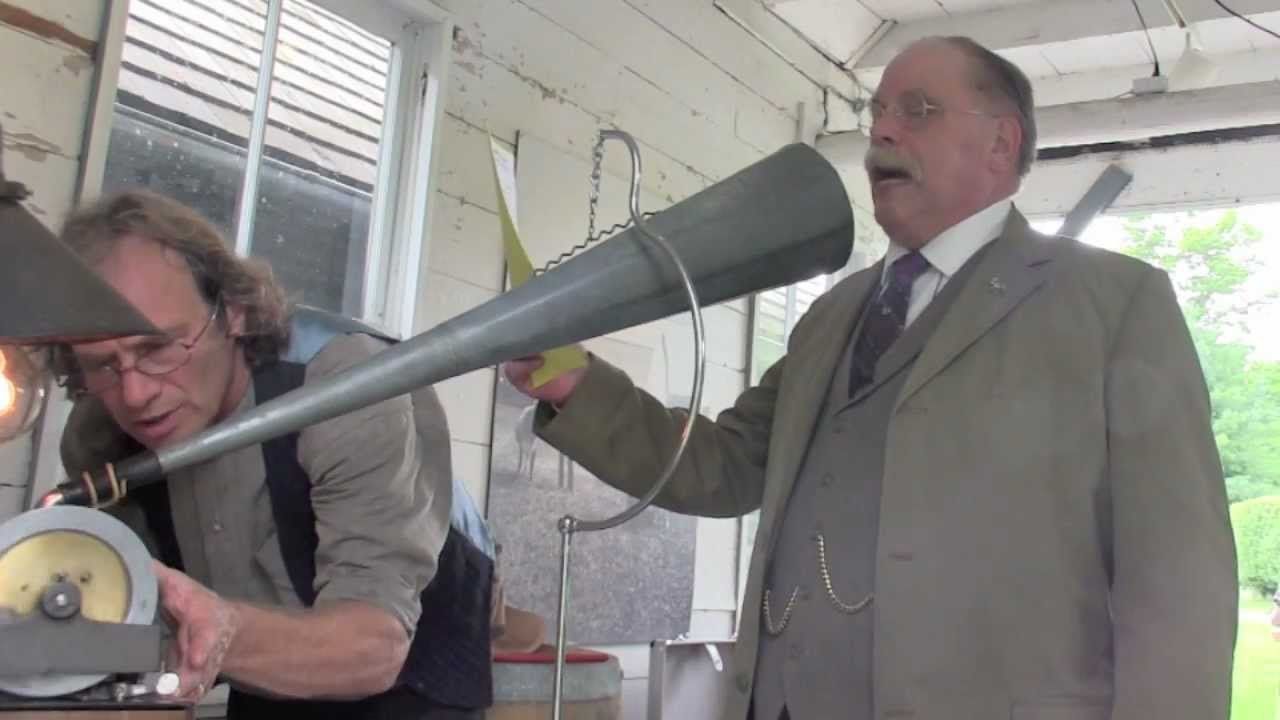Theodore Roosevelt, Captured on Spinning Wax
A Roosevelt impersonator and an Edisonian audiophile bring the former U.S. president’s words to life

Theodore Roosevelt, the 26th president of the United States, was a gifted orator whose animated style, progressive politics, and clipped patrician diction spoke for and to the common people. And though he died in 1919, we still know his distinctive voice because many of his speeches were recorded on early audio equipment—most notably, the wax cylinder phonograph invented by Thomas Edison.
Recently, at the Sagamore Hill National Historic Site, the former president’s former home on Long Island, N.Y., Roosevelt’s words came to life once more and were once more captured in wax. This time, though, renowned Roosevelt impersonator James Foote spoke the words, while Peter Dilg, a collector of antique audio equipment, expertly manned the Edison recording system. The 1.5-minute speech Foote delivered was originally given by Roosevelt back in 1913 to the Boys Progressive League and contains his memorable exhortation: “Don’t flinch, don’t foul, and hit the line hard.”
For more about Sagamore Hill, visit the website of the National Park Service.
Peter Dilg: And then you just lay it onto the cylinder and we’re ready to go. That’s how it records.
James W. Foote: My name is James W. Foote. I perform in the capacity as Theodore Roosevelt, and we just made several Edison records here as Roosevelt did at Sagamore Hill in 1950. [As Roosevelt] A great democracy has got to be progressive or soon it will cease to be either great or a democracy.
Peter Dilg: My name is Peter Dilg, and I’ve been a collector of antique phonographs and gramophones since I’ve been about 5 years old. This stuff was just considered secondhand items, and you could find them in antique shops and thrift stores and out on the curb. I restore them. I fix them. I sell them and things like this at the Roosevelt Museum.
James W. Foote: We’re celebrating here at Sagamore Hill 50 years of the National Parks Service running Sagamore Hill. Sagamore Hill was Roosevelt’s primary residence. [As Roosevelt] Fond as I am of the White House and though I’ve much appreciated my years in it, there isn’t any place in the world like home, like Sagamore Hill.
Peter Dilg: What Mr. Foote will do is he’ll speak into this horn, and all the sound vibrations will come down this horn into the cutter, which is right over here. What we’ve got here is an 1898 studio Edison recording machine, and it’s a very accurate phonograph. This here’s the flywheel that keeps the rpms running real smooth. It runs at 160 rpm. And the sound goes down that horn, into the hole, and vibrates this glass diaphragm. When that vibrates, it cuts a groove into the wax. This is a wax blank we’re going to record on. It’s a brown wax material. This blank is 100 years old. It’s made of a metallic soap, actually. It’s not really wax. And we’ve got to keep it a little warm when we’re recording so it will pick up the vibrations good. And we get our power by winding it up like that. And then you just lay it onto the cylinder and we’re ready to go. That’s how it records. Okay.
James W. Foote: [As Roosevelt] Those of us who believe in progressive nationalism are sometimes dismissed with the statement that we are radical. So we are. I wish to see you boys join the party and conduct yourselves as in a football game. In other words, don’t flinch, don’t foul, but hit the line hard. [applause]
Phonograph playback: Don’t flinch, don’t foul, but hit the line hard.
NOTE: Transcripts are created for the convenience of our readers and listeners and may not perfectly match their associated interviews and narratives. The authoritative record of IEEE Spectrum’s video programming is the video.
Jean Kumagai is the Executive Editor at IEEE Spectrum. She holds a bachelor's degree in science, technology, and society from Stanford University and a master's in journalism from Columbia University.